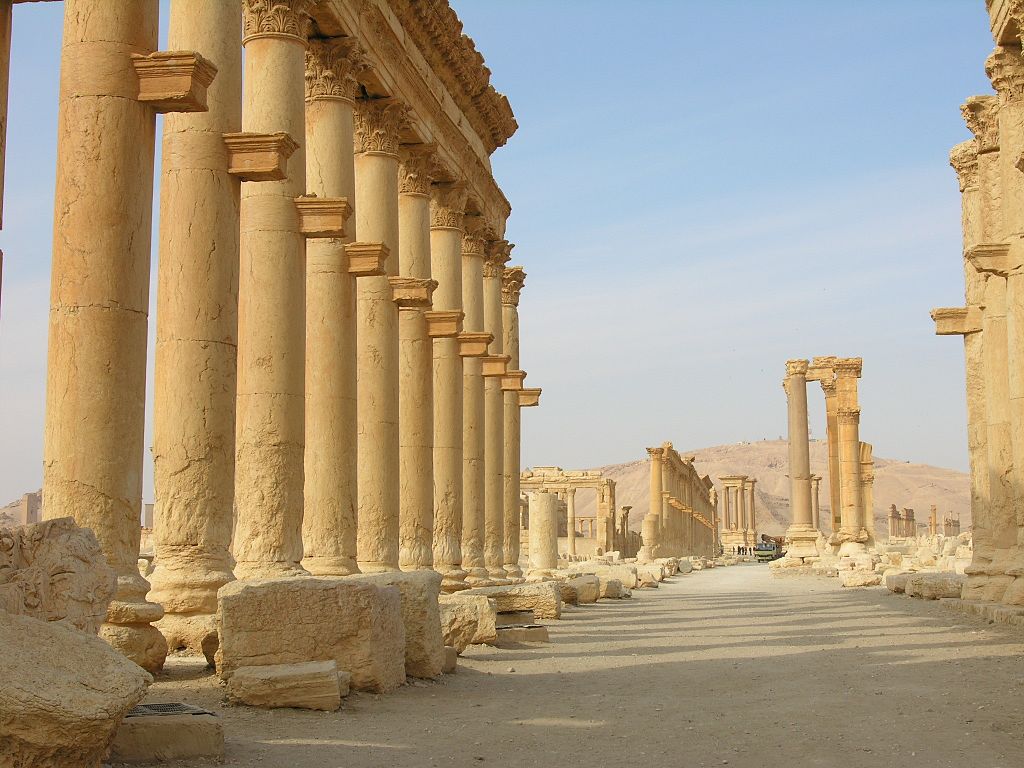3D Scans, Archaeological Sites, and “Digital Colonialism”
During the height of its power, the Islamic State in Iraq and Syria (ISIS) destroyed and looted numerous cultural heritage sites under its control. In January 2017, it was reported that ISIS had destroyed two ancient structures in Palmyra. Cultural heritage sites are also prone to natural disasters. An earthquake that hit an ancient city in Myanmar in 2016 damaged numerous temples located there.
Luckily, with the availability of 3D scanning technology, archaeologists and historians have better information available when researching these damaged sites and planning potential restorations of them. CyArk is one non-profit that has been creating 3D scans of historic sites. CyArk has made available much of their work via a partnership with Google Arts & Culture. Controversially, CyArk owns the copyrights of the scans they made, rather than the countries where the sites are located, meaning that these countries would need CyArk’s permission to use the images for commercial purposes.
Erin Thompson, a professor of art crime, situates CyArk’s copyrighted scans in a long history of Western appropriation of foreign culture, calling it “digital colonialism.” It is worth asking, is there something morally objectionable in CyArk’s copyrights? Do the countries where these sites are located deserve more legal control over their use? Is it fair to situate CyArk’s actions in the same history as the theft by Western nations of colonized countries’ cultural artifacts?
Generally speaking, copyright “protects original works of authorship including literary, dramatic, musical, and artistic works, such as poetry, novels, movies, songs, computer software, and architecture” and provides the author rights over the use and distribution of these works. One primary justification for the protection of copyright is utilitarian. Granting rights over creative works to the authors creates incentives for the production of more works by these creators. As such, copyrights promote the common good, on the assumption that humanity is improved by the promotion of creative production.
From a utilitarian perspective, CyArk’s copyrights appear to have a lot going for them. One would be hard-pressed to argue that the 3D scans do not have a generally positive impact on human happiness. They make available for enjoyment and study these valuable antiquities to many more people on the globe. Such availability promotes intercultural awareness. Moreover, the 3D scans help preserve our collective knowledge of the practices and cultures of past civilizations. In addition, they may even make it possible to reconstruct with accuracy any sites that have been destroyed.
Of course, none of these considerations tell us if copyright protections play any role in incentivizing the production of the 3D scans. If copyright protections helped motivate CyArk to perform this work, then the utilitarian justification fits. If copyright played no role in CyArk’s motivations, then its utilitarian justification is less strong. CyArk claims that it copyrights the scans “so no one can use them in an inappropriate way.” It is unknown, however, what CyArk considered inappropriate and whether CyArk believes the countries of origin for these cultural sites would likely have used the scans inappropriately. Moreover, it is unknown whether CyArk would have still produced and disseminated these scans, knowing they would have had no control over their “inappropriate” uses.
Independent of the question of the justification of copyright in general, criticisms of CyArk’s copyrights as digital colonialism suggest that detractors believe that the copyrights of CyArk’s 3D scans should not trump of other moral rights held by the sites’ countries of origin. These are, after all, scans of cultural heritage sites, and CyArk did not create the cultural heritage sites themselves. Thompson sees CyArk’s works as “the latest example of a Western nation appropriating a foreign culture, a centuries-long battle.” Thompson cites other disputes between Western nations and previously colonized nations over artifacts removed from their countries of origin and held in museums in Western nations. These artifacts, so the underlying moral argument goes, belong to the people with whom they are associated and, thus, ought to be controlled by those people or their duly appointed representatives. CyArk’s copyrights unfairly trump the host country’s rights to control how its cultural heritage sites are used.
Indeed, these criticisms align nicely with the non-utilitarian personality-based justification of intellectual property rights. On this view, intellectual property rights protect the ownership rights individuals have in their talents, feelings, and experiences. Our use of our talents and feelings to produce creative works is a central part of human freedom and self-actualization. Both CyArk and the host nations/communities of the cultural heritage site arguably have some moral claim to how these scans can be used, given that their existence rests on the creative efforts of both CyArk and the people who built the sites in the first place. Perhaps both CyArk and the host countries could form mutually agreeable compacts, sharing control over the uses of these 3D scans in ways that benefit all.





